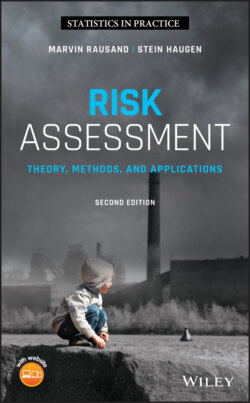Читать книгу Risk Assessment - Marvin Rausand - Страница 27
Definition 2.1 (Risk)
ОглавлениеThe combined answer to the three questions: (1) What can go wrong? (2) What is the likelihood of that happening? and (3) What are the consequences?
The three questions may be explained briefly as follows2 :
1 (1) What can go wrong?To answer this question, we must identify the possible accident scenarios that may harm some assets that we want to keep and protect. An accident scenario is a sequence of events, starting with an initiating event and ending with an end state that affects and causes harm to the assets. The assets may include people, animals, the environment, buildings, technical installations, infrastructure, cultural heritage, reputation, information, data, and many more.
2 (2) What is the likelihood of that happening?The answer to this question can be given as a qualitative statement or quantitatively as probabilities or frequencies. We consider each accident scenario that was identified in Question 1, one‐by‐one. To determine the likelihood, it is often necessary to carry out a causal analysis to identify the basic causes (hazards and threats) that may give rise to the accident scenario.
3 (3) What are the consequences?For each accident scenario, we must identify the potential harm or adverse consequences to the assets mentioned in Question 1. Most systems have safeguards or barriers that may prevent or mitigate harm. The harm to the assets depends on whether or not these barriers function as required when the accident scenario occurs.
A risk analysis is carried out to provide answers to the three questions in the definition of risk. Risk analysis and risk assessment are further defined and discussed in Chapter 3. The first question “what can go wrong?” clearly shows that we focus on scenarios that give “negative” consequences – even if risk refers to both gains and losses in economic theory.
